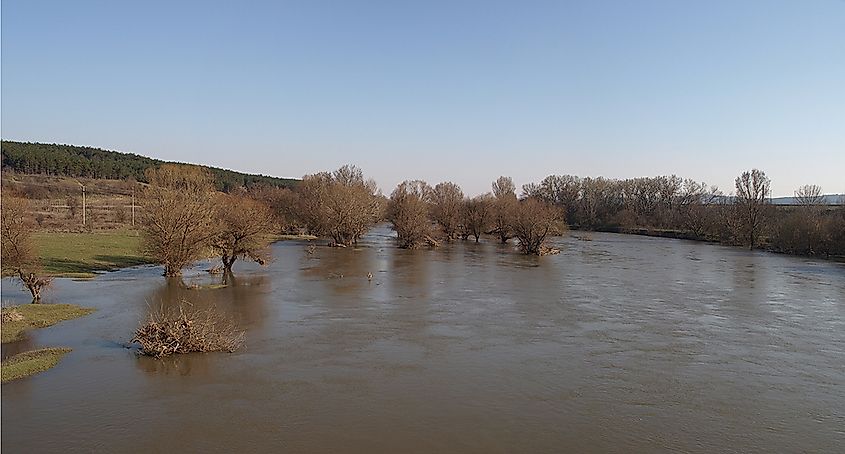
Evros River
Flowing through the Balkans region of Southeastern Europe, the Evros River is rich in history. The river is also known by several other names, including Meriç and Maritsa. As the second largest river located in the Balkans and flowing through the countries of Bulgaria, Greece, and Turkey, it serves as a trade route, political border, and home to a wide variety of flora and fauna. A massive body of water, it has a drainage basin of 32,932 mi2.
Source

The Evros River begins in Bulgaria, emerging from the Rila Mountains, specifically from the northern section of Musala Peak. This mountain range is the highest in Bulgaria, positioned on the southwestern side of the country. It is part of the Rila-Rhodope Massif range. The river Evros arises from the region where Mount Rhodope meets Mount Scomius and flows outwards, following a southeastward direction. Among its major tributaries are Topolnitsa, Tundzha, Arda, and Stryama.
Course Of The Evros River

The Evros River has a total length of 530 kilometers, of which 230 km belong to Greece. Impressively, it is the Balkans' second-longest river, just short of the River Danube. The waters make their way across the land, tracing Turkey, Bulgaria, and Greece, forming a natural boundary between Greece-Bulgaria and Greece-Turkey, before draining into the Thracian Sea. Beginning with a southeastern path, once it reaches below Adrianópolis, the River Evros turns southwesterly. It continues onward in this direction until joining the sea.
Climate Of The River Evros Basin
Because of the length of the Evros River, the climate varies depending on the location. Closer to the mountainous regions, the river can freeze during the cold season. The Rila region has lows of -5°C, and the waters mirror these temperatures. At its delta, Evros River enjoys a Mediterranean climate with warm weather that supports valuable wetlands.
Flora And Fauna

The Evros River is a significant wetland characterized by the substantial sediment it produces. It's home to seven distinct floral biotypes. These include riverine, tamarisks, wet meadows, submerged vegetation in brackish water, freshwater vegetation, halophytic vegetation, and the vegetation of sandy islets. There are 300 known floral species in the region.

The Evros River Delta is home to 114 known species of fauna. The river's fauna mirrors the North Aegean, where the birds have particular distinctions. The river boasts diverse avian species, including the Spotted, Imperial, and White-tailed eagles. There are 21 amphibious and reptilic creatures native to the area, the number diminishing in proportion to a reduction across Europe. Native mammals include the wildcat, fox, marten, weasel, and otter.
Economic Importance
The river is home to many trading posts because its valley provides fertile soil for a host of vegetables for export. With access to the Sophia-Istanbul railroad, it enables the country to engage in international commerce. Due to the significant water flow throughout the river, there are ample hydroelectric farms and irrigation development across the river's tributaries.
The river vessels supported the majority of its commerce until the entry of railways in the 1890s. This led to port towns getting bypassed by the railroad, such as Ainos. Eventually, settlers left port towns for the more modern trade methods, taking residence in rail hubs rather than by the sea.
History Of River Evros

The Evros River has an impressive history, dating back to its service in dividing Thrace between Turkey and Greece. Historically called the Hebrus River, it had significant value during the Byzantine era. Leading up to the 19th century, the area was a major form of transportation from the north Aegean areas to Thrace. It connected to the city now known as Edirne.
Its more recent history involves a plethora of border crossings, both successful and not. Because the water abuts Asia and Europe, many attempts to brave its waters to cross to another country. It continues to see people landing on both sides of the border, with Turkey and Greece managing migrants. Despite the danger of the waters and the risk of hypothermia, many continue to use the river for unofficial travel.











